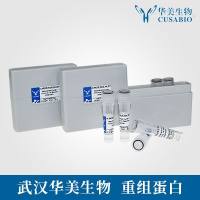Conjugation of LPS-Derived Oligosaccharides to Proteins Using Oxime Chemistry
互联网
互联网
相关产品推荐

Recombinant-Sorghum-bicolor-4-hydroxyphenylacetaldehyde-oxime-monooxygenaseCYP71E14-hydroxyphenylacetaldehyde oxime monooxygenase EC= 1.14.13.68 Alternative name(s): Cytochrome P450 71E1
¥13496

土壤脂肪酶试剂盒活性检测试剂盒,用于对样本中S-LPS活性检测,S-LPS Activity Assay Kit
¥369

yscM/yscM蛋白/yscM; Yop proteins translocation protein M蛋白/Recombinant Yersinia enterocolitica Yop proteins translocation protein M (yscM)重组蛋白
¥69

Click-iT™ sDIBO Alkynes for copper-free click chemistry
¥5096.90

Recombinant-Manihot-esculenta-2-methylbutanal-oxime-monooxygenaseCYP71E72-methylbutanal oxime monooxygenase EC= 1.14.13.n8 Alternative name(s): Cytochrome P450 71E7
¥13328
相关问答

